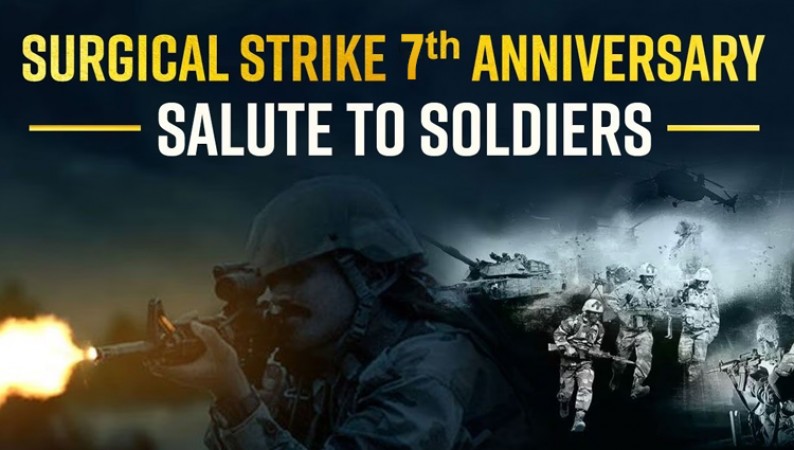
LOC surgical strike 7th anniversary 2023: Seven years ago, on September 28, 2016, the Indian Army executed a daring and successful surgical strike against terrorist camps located in Pakistan-occupied Kashmir. This operation was a response to the heinous attack that occurred on September 18, 2016, when Pakistan-based terrorists from Jaish-e-Mohammed infiltrated an Indian Army camp in Uri, resulting in the tragic loss of 19 soldiers' lives. The surgical strike sent a clear message that India would not tolerate cross-border terrorism, and it remains a defining moment in the history of Indian military operations. In this article, we delve into the details of how the 2016 surgical strike was meticulously carried out.
The Uri Attack: Precursor to the Surgical Strike
The events leading up to the surgical strike began with the Uri attack, an audacious act of terror perpetrated by Jaish-e-Mohammed terrorists. In the early hours of September 18, 2016, heavily armed militants infiltrated the Indian Army's Uri base camp near the Line of Control (LoC) in Jammu and Kashmir. This brutal assault resulted in the tragic loss of 19 Indian soldiers' lives and further escalated tensions in the region.
The Decision to Conduct a Surgical Strike
The Uri attack shook the Indian government and military establishment to their core. In response to this act of terrorism, India decided to take decisive action. The government, under the leadership of Prime Minister Narendra Modi, gave the green light to conduct surgical strikes against terrorist launch pads and infrastructure across the LoC. The objective was clear: to neutralize threats posed by terrorists and prevent future attacks.
Planning and Preparation
The success of a surgical strike hinged on meticulous planning and flawless execution. Indian intelligence agencies, including the Research and Analysis Wing (RAW) and the Intelligence Bureau (IB), played a crucial role in gathering actionable intelligence about the targeted terrorist camps. The military's Special Forces, particularly the elite Para Special Forces and the Ghatak platoons, were entrusted with the mission.
Key Elements of the Surgical Strike
Surprise Element: Maintaining the element of surprise was paramount. The strike was planned with utmost secrecy, and details were known only to a select few. This ensured that terrorists had no time to react or flee.
Coordinated Assault: The strike involved multiple teams targeting different terrorist camps simultaneously. This strategy prevented terrorists from reinforcing each other or escaping.
Precision and Speed: The Indian Special Forces executed the operation with surgical precision, minimizing collateral damage. Swift execution of the mission was critical to its success.
Deniability: India carefully planned the strike to leave no evidence of its involvement. Soldiers were equipped with gear devoid of Indian markings, and any captured terrorists were quickly silenced.
Execution of the Surgical Strike
On the night of September 28, 2016, Indian Special Forces crossed the LoC under the cover of darkness. They penetrated deep into Pakistan-occupied Kashmir to reach their designated targets. The soldiers swiftly and decisively neutralized terrorists and destroyed their infrastructure. The operation was executed flawlessly, and all teams returned safely to Indian territory.
The Aftermath
The surgical strike of 2016 achieved its objectives. It demonstrated India's resolve to protect its sovereignty and retaliate against cross-border terrorism. The successful operation was met with widespread national and international acclaim. It also sent a clear message to Pakistan that India would not hesitate to take similar action in the face of future threats.
Seven years have passed since the 2016 surgical strike, but its significance still reverberates in the collective memory of India. It stands as a testament to the Indian Army's professionalism, courage, and commitment to safeguarding the nation. The surgical strike was not just a military operation; it was a symbol of India's determination to protect its citizens and maintain peace in the region. While it remains a significant chapter in India's history, it also serves as a reminder that the nation will respond resolutely to any threat to its security and sovereignty.